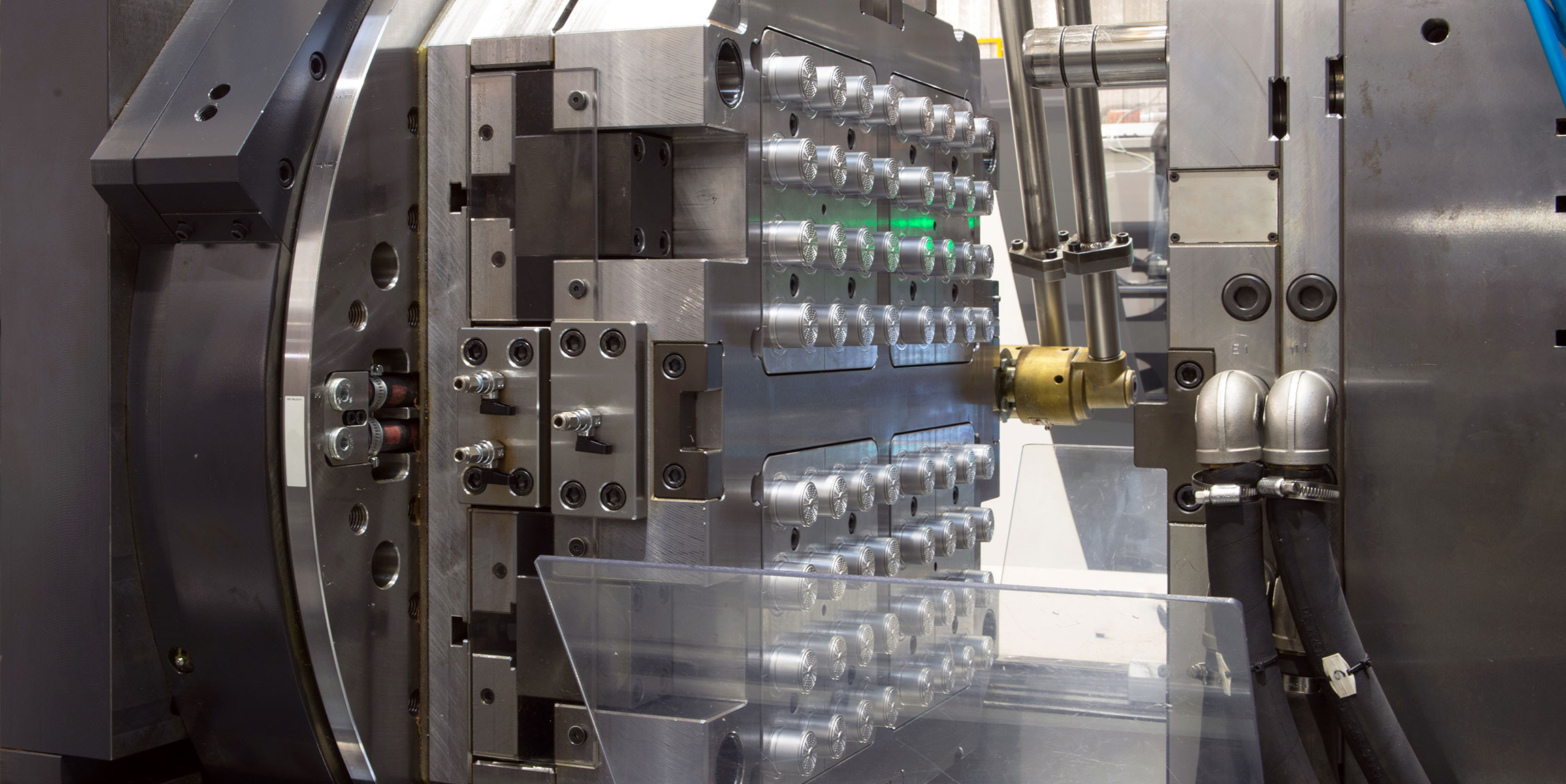
Metal Injection Molding (MIM 가공 공법)
금속 분말과 바인더를 혼합하여 성형한 후, 고온에서 열처리하여 금속 부품을 제조하는 혁신적인 기술입니다. 이 가공 방식은 정밀한 금속 부품을 대량 생산할 수 있는 효율적인 방법으로, 다양한 산업 분야에서 활발히 활용되고 있습니다.
1. MIM 가공의 원리
MIM은 금속 분말과 플라스틱 바인더를 혼합하여 부품을 성형한 후, 바인더를 제거하고 금속 부품을 고온에서 열처리하여 성형하는 방식입니다. 이 과정은 일반적인 금속 주조나 절삭 가공에 비해 정밀하고 복잡한 형상도 쉽게 제조할 수 있는 장점이 있습니다.
2. MIM의 장점
- 정밀도: MIM은 고정밀 금속 부품을 제조할 수 있으며, 치수 정확도가 뛰어납니다. 미세한 구조와 복잡한 형상도 구현할 수 있습니다.
- 대량 생산 가능: 고속 생산이 가능하여 대량 생산에 적합합니다. 비용 효율적으로 대량으로 부품을 생산할 수 있습니다.
- 비용 절감: 다른 금속 가공 방법에 비해 저렴한 생산 단가를 유지할 수 있으며, 재료의 낭비를 최소화할 수 있습니다.
- 복잡한 형상 구현: 복잡한 형상이나 작은 부품을 정밀하게 제작할 수 있어, 산업적으로 매우 유용합니다.
3. MIM 가공의 적용 분야
MIM 기술은 여러 산업에서 활용됩니다:
- 자동차 산업: 엔진 부품, 브레이크 부품, 차체 부품 등.
- 의료기기: 정밀한 의료기기 부품, 수술 도구 등.
- 전자기기: 스마트폰 부품, 노트북 케이스 등.
- 항공우주: 내열성 및 내구성이 요구되는 부품.
- 기계 및 기계 부품: 고정밀 기계 부품과 같은 정밀 부품들.
4. MIM 가공의 공정
MIM 가공은 다음과 같은 단계로 진행됩니다:
- 혼합: 금속 분말과 바인더를 혼합하여 녹여서 성형할 수 있는 상태로 만듭니다.
- 성형: 혼합된 재료를 금형에 넣고 고온에서 성형하여 원하는 형태로 만듭니다.
- 디바인딩: 성형된 부품에서 바인더를 제거하여 금속만 남기도록 합니다.
- 소결: 고온에서 금속을 소결하여 최종 부품을 완성합니다.
5. MIM 가공의 도전 과제
MIM 가공은 많은 장점이 있지만, 몇 가지 도전 과제도 존재합니다:
- 재료 선택의 제한: 사용 가능한 금속 합금이 제한적일 수 있습니다.
- 형상 제약: 지나치게 복잡한 형상이나 미세한 세부 사항은 구현하기 어려울 수 있습니다.
- 비용 문제: 초기 금형 제작 비용이 상당히 들 수 있습니다.
6. MIM 가공의 미래
MIM 가공은 기술 발전에 따라 계속해서 진화하고 있습니다. 새로운 금속 합금 개발, 더 정교한 성형 기술 도입, 생산 속도 향상 등의 발전을 통해 더욱 다양한 분야에 적용될 가능성이 큽니다. MIM 기술은 지속적으로 경쟁력을 높여가며, 금속 부품 제조의 새로운 패러다임을 만들어가고 있습니다.
결론적으로, MIM 가공은 정밀한 금속 부품을 효율적으로 대량 생산할 수 있는 강력한 기술로, 다양한 산업 분야에서 요구되는 고정밀 부품을 실현할 수 있는 유망한 방법입니다.
MIM (Metal Injection Molding) Processing: An Innovative Metal Parts Production Technology
MIM (Metal Injection Molding) is an innovative technology that combines metal powder and binder to form parts, followed by a high-temperature heat treatment to produce metal components. This processing method is an efficient way to manufacture precise metal parts and is widely used across various industries.
1. Principles of MIM Processing
MIM combines metal powder with a plastic binder to mold the material, which is then subjected to a binder removal process followed by heat treatment to create a fully formed metal part. This process is more precise and capable of producing complex shapes compared to traditional metal casting or machining methods.
2. Advantages of MIM
- Precision: MIM allows for the production of high-precision metal parts with excellent dimensional accuracy. It can easily produce fine structures and complex shapes.
- High-volume Production: MIM is ideal for high-speed production, making it cost-effective for mass manufacturing.
- Cost Efficiency: Compared to other metal processing methods, MIM can reduce production costs and minimize material waste.
- Complex Shapes: MIM can produce intricate and small parts with precise features that would be difficult or expensive to achieve using other methods.
3. Applications of MIM Processing
MIM technology is used in a wide range of industries:
- Automotive: Engine parts, brake components, and body parts.
- Medical Devices: Precision medical device components, surgical instruments, etc.
- Electronics: Smartphone parts, laptop cases, and other electronic components.
- Aerospace: Parts requiring high heat resistance and durability.
- Industrial Machinery: Precision components for machinery and equipment.
4. MIM Processing Stages
The MIM process involves several key stages:
- Mixing: Metal powder is mixed with a binder to form a moldable material.
- Molding: The mixture is injected into a mold to form the desired shape at elevated temperatures.
- Debinding: The binder is removed from the molded part to leave only the metal material.
- Sintering: The metal is heated to high temperatures to achieve full density and strength, completing the final part.
5. Challenges in MIM Processing
While MIM offers numerous benefits, there are some challenges:
- Material Limitations: The range of metal alloys that can be used in MIM is relatively limited.
- Shape Constraints: Extremely complex shapes or fine details can be difficult to achieve.
- Upfront Costs: The initial cost of creating molds for MIM can be significant.
6. The Future of MIM Processing
MIM processing continues to evolve with advancements in material science, molding technology, and production efficiency. Ongoing developments in new metal alloys, enhanced molding techniques, and faster production speeds will expand the range of applications for MIM. As the technology progresses, it is expected to remain a highly competitive and promising method for manufacturing metal parts across various industries.
In conclusion, MIM processing is a powerful technology for producing high-precision metal parts efficiently and cost-effectively. It is a promising method for producing metal components across many industries where precision and mass production are critical.
문 의 하 기
GPS는 중국 현지 자체 공장에서 경쟁력 있는 단가와 납기로 고객사들에게 우수한 품질의 제품을 제공합니다. 이를 통해 글로벌 시장에서의 경쟁력을 강화하며, 고객의 요구에 맞춘 신속하고 효율적인 서비스로 만족을 드리고 있습니다. 최신 기술을 바탕으로 고품질의 부품을 합리적인 가격에 제공함으로써 고객사의 생산성 향상에 기여하고 있습니다 - GPKOREA
